Land Invertebrates
Media
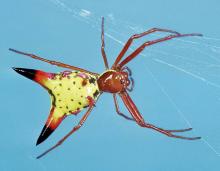
Species Types
Scientific Name
Micrathena sagittata
Description
One of three micrathena spiders in Missouri, the arrowshaped micrathena is small but unforgettable. Females have striking reddish, black, and yellow colors, and a pair of outward-pointing tubercles at the end of the body give it a triangular or "arrow" shape.
Media
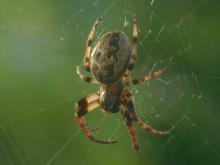
Species Types
Scientific Name
Larinioides spp.
Description
Furrow orbweavers have a distinctive dark pattern on the abdomen that resembles a furrow. These harmless spiders are common under the eaves of homes and near porch lights.
Media
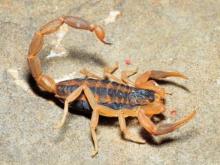
Species Types
Scientific Name
Centruroides vittatus
Description
Striped bark scorpions are pale yellowish brown, usually with two lengthwise dark stripes on the abdomen. It is the only species of scorpion in Missouri. It occurs in glades and other dry, warm, rocky areas, and sometimes in buildings and shelters and under piles of wood, brush, or garbage.
Media

Species Types
Scientific Name
Panorpa spp.
Description
Male scorpionflies will make you look twice, because the abdomen is tipped with what looks like a scorpion stinger! These nifty insects cannot sting, however.
Media
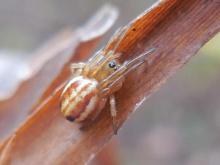
Species Types
Scientific Name
Araneus pratensis
Description
The openfield orbweaver is a common nocturnal orb-weaving spider in Missouri.
Media

Species Types
Scientific Name
Araneus marmoreus
Description
The marbled orbweaver is sometimes called the “pumpkin spider” because its rounded abdomen is sometimes bright orange. The color and markings can vary greatly.
Media
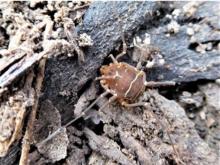
Species Types
Scientific Name
Members of suborder Laniatores
Description
Armored harvestmen have spines on their fingerlike mouthparts (pedipalps). Unlike other harvestmen, members of this suborder of so-called daddy longlegs do not usually have long legs.
Media
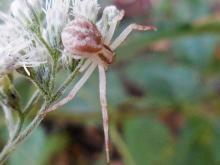
Species Types
Scientific Name
Mecaphesa asperata
Description
The northern crab spider has many spiny hairs covering the top surfaces of the carapace, abdomen, and legs, and it has usually has greenish-yellow or yellow-brown markings.
Media

Species Types
Scientific Name
Mecaphesa celer (formerly Misumenops celer)
Description
The swift crab spider has many spiny hairs covering the top of its body and legs, and it often has a light pinkish-tan cast.
Media

Species Types
Scientific Name
Misumessus oblongus (formerly Misumenops oblonga)
Description
The green crab spider has spines, and the entire body and legs are pale green to silvery white. Like other crab spiders, its legs extend outward from the sides, and it can walk in any direction.
See Also



Media

Species Types
Scientific Name
Cisseps fulvicollis
Description
The yellow-collared scape moth is more often “orange-collared.” And whether you think it looks more like a firefly or a wasp, it’s still a moth!
Media

Species Types
Scientific Name
Nearly 150 species in North America north of Mexico
Description
Slim, delicate plume moths are instantly recognizable by their T-shaped silhouette, long legs, and muted shades of tan and brown. It can be hard to separate the various species.
Media

Species Types
Scientific Name
Pyrrharctia isabella
Description
Not many people know the adult Isabella tiger moth when they see one, but we’re all acquainted with its caterpillar, the woolly worm, or woolly bear.
About Land Invertebrates in Missouri
Invertebrates are animals without backbones, including earthworms, slugs, snails, and arthropods. Arthropods—invertebrates with “jointed legs” — are a group of invertebrates that includes crayfish, shrimp, millipedes, centipedes, mites, spiders, and insects. There may be as many as 10 million species of insects alive on earth today, and they probably constitute more than 90 percent all animal species.





















